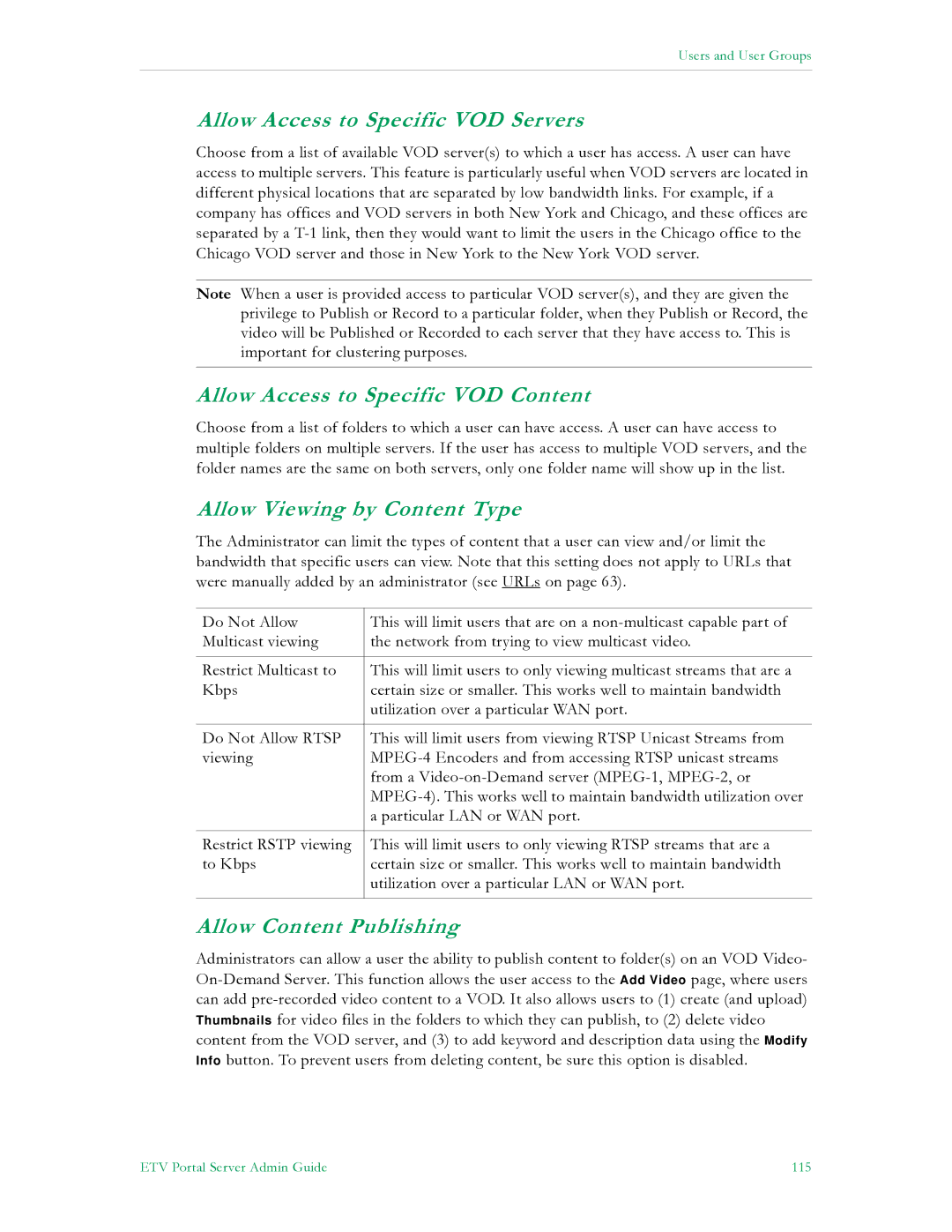
Users and User Groups
Allow Access to Specific VOD Servers
Choose from a list of available VOD server(s) to which a user has access. A user can have access to multiple servers. This feature is particularly useful when VOD servers are located in different physical locations that are separated by low bandwidth links. For example, if a company has offices and VOD servers in both New York and Chicago, and these offices are separated by a
Note When a user is provided access to particular VOD server(s), and they are given the privilege to Publish or Record to a particular folder, when they Publish or Record, the video will be Published or Recorded to each server that they have access to. This is important for clustering purposes.
Allow Access to Specific VOD Content
Choose from a list of folders to which a user can have access. A user can have access to multiple folders on multiple servers. If the user has access to multiple VOD servers, and the folder names are the same on both servers, only one folder name will show up in the list.
Allow Viewing by Content Type
The Administrator can limit the types of content that a user can view and/or limit the bandwidth that specific users can view. Note that this setting does not apply to URLs that were manually added by an administrator (see URLs on page 63).
Do Not Allow | This will limit users that are on a |
Multicast viewing | the network from trying to view multicast video. |
|
|
Restrict Multicast to | This will limit users to only viewing multicast streams that are a |
Kbps | certain size or smaller. This works well to maintain bandwidth |
| utilization over a particular WAN port. |
|
|
Do Not Allow RTSP | This will limit users from viewing RTSP Unicast Streams from |
viewing | |
| from a |
| |
| a particular LAN or WAN port. |
|
|
Restrict RSTP viewing | This will limit users to only viewing RTSP streams that are a |
to Kbps | certain size or smaller. This works well to maintain bandwidth |
| utilization over a particular LAN or WAN port. |
|
|
Allow Content Publishing
Administrators can allow a user the ability to publish content to folder(s) on an VOD Video-
ETV Portal Server Admin Guide | 115 |
